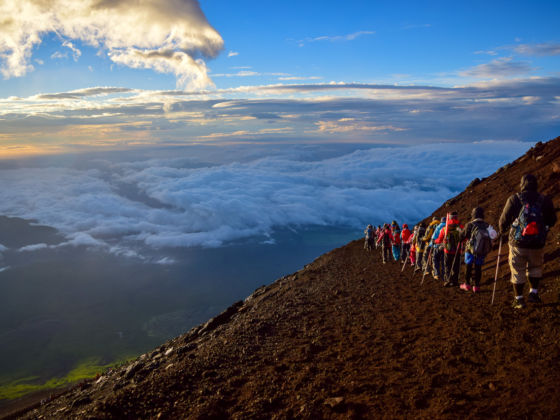Hiking Mount Fuji should be on any outdoor enthusiast’s to-do list when visiting Japan. Here are some tips for ascending Japan’s highest peak.
1. The day-hike starts from Mount Fuji’s 5th station. To get there, you’ll need to take a bus.
Mount Fuji has 9 stations leading up to the peak. The base of the trail starts at the 5th station, about 2300 meters (7545 feet) above sea level. Buses will take you up there on a paved road, but you have to catch the earliest one to do the hike in a single push. The times differ based on which trail you choose. Prepare to wake up well before dawn.
